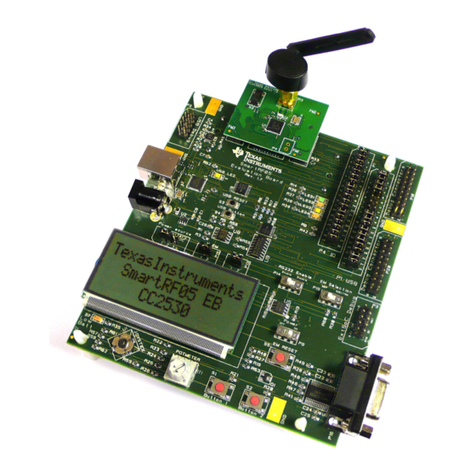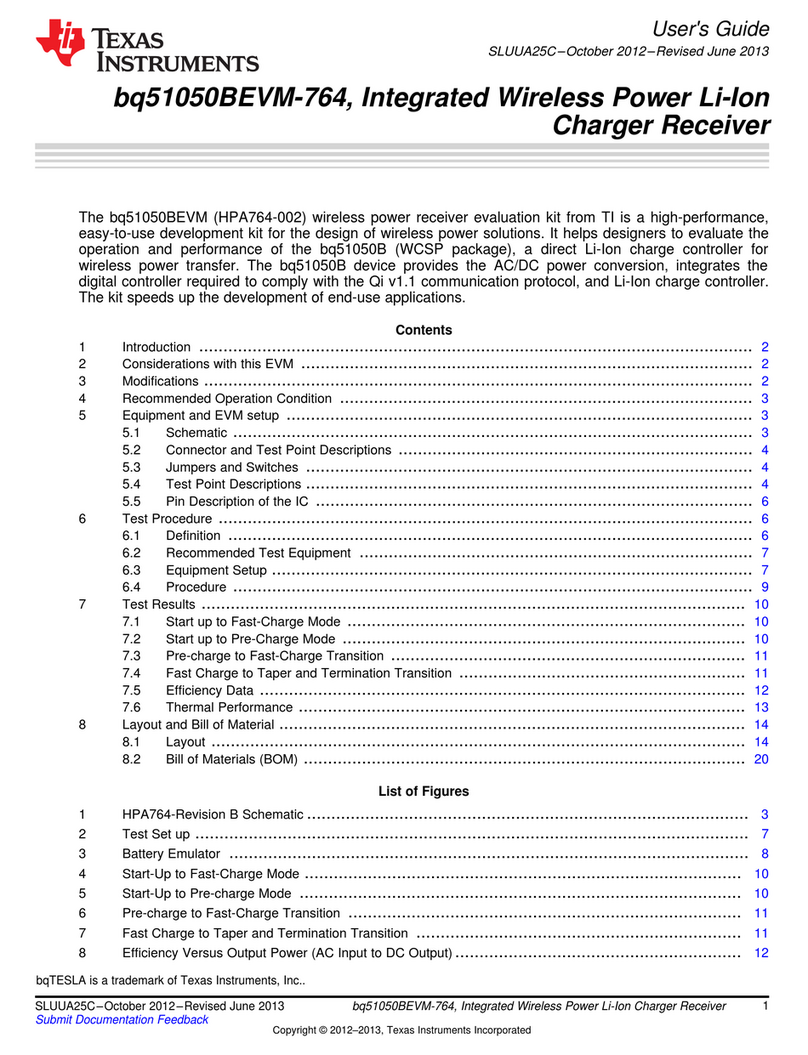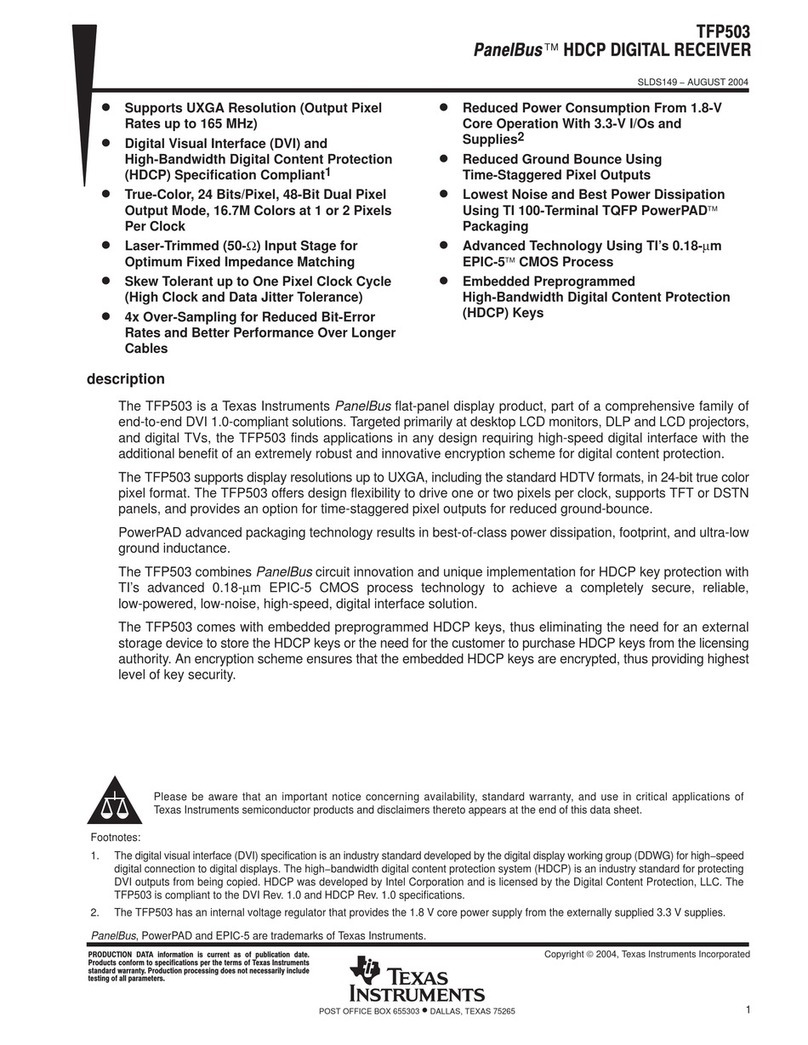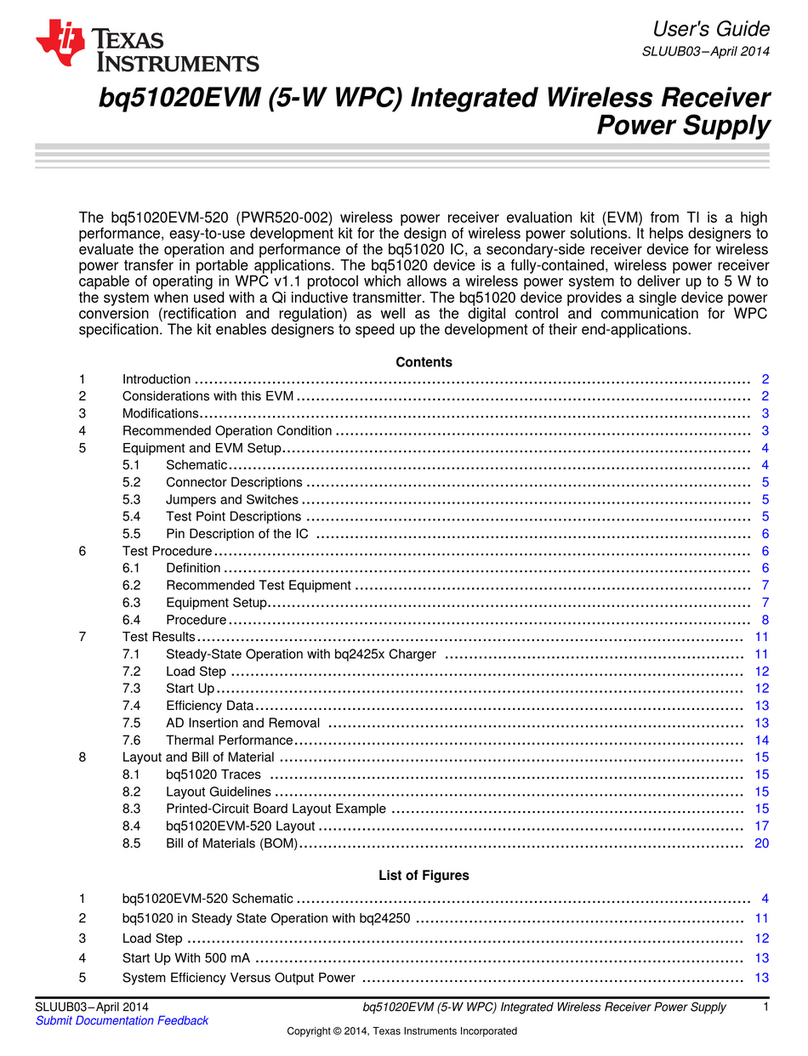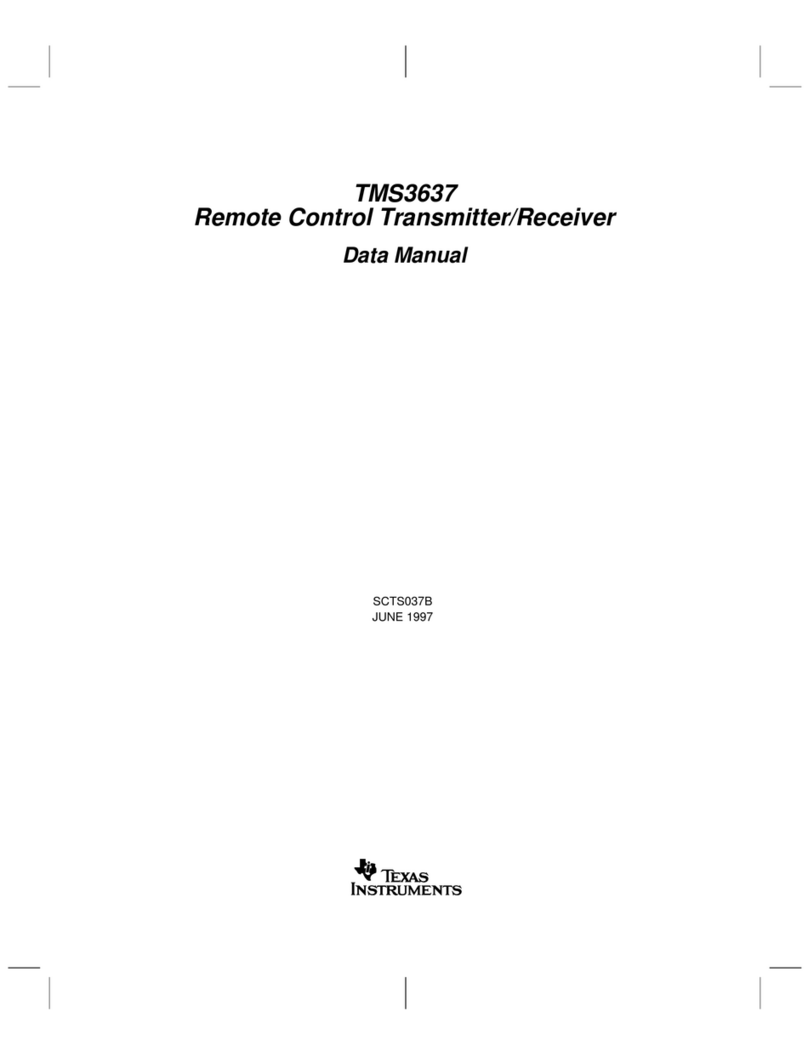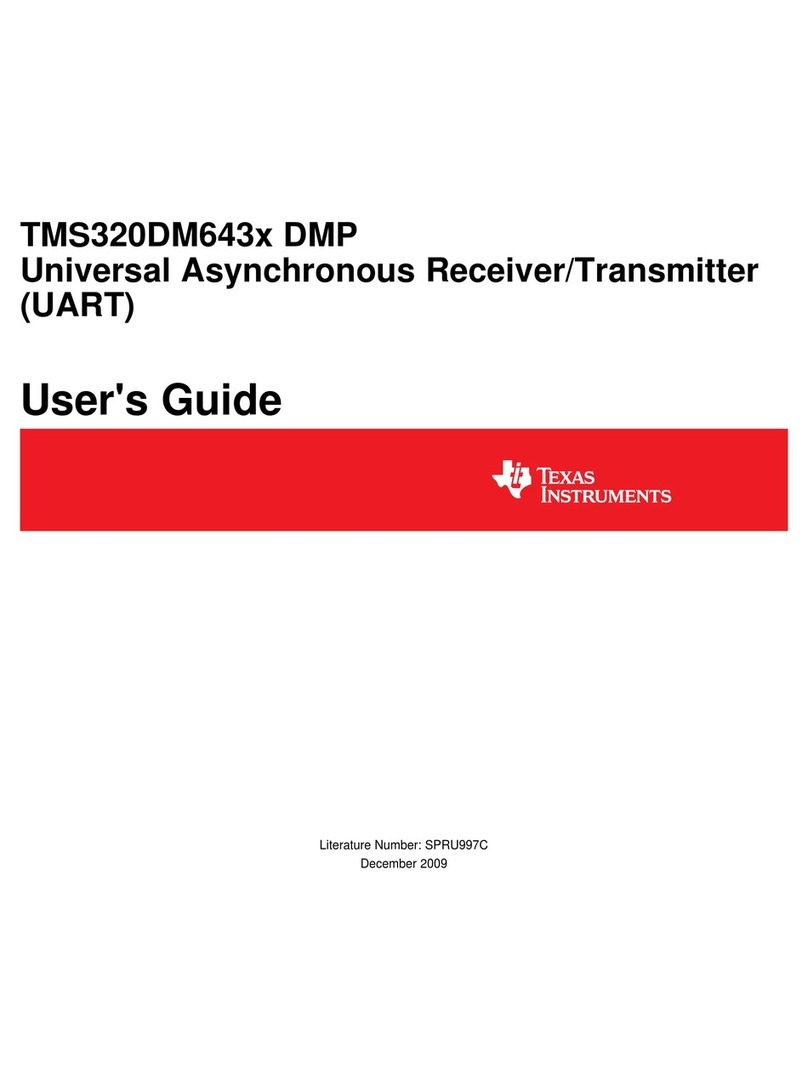
www.ti.com
Introduction
1 Introduction
The bq5122x is an advanced, flexible, secondary-side device for wireless power transfer in portable
applications. The bq5122X devices integrate an ultra-low-impedance synchronous rectifier, a very high
efficiency post regulator, digital control, and accurate voltage and current loops. The bq5122X devices
provide the AC/DC power conversion while integrating the digital control required. The IC complies with
both WPC v1.1 and PMA communication protocol.
Together with the bq50xxx primary-side controller or any type-1 PMA transmitter, the bq5122X enables a
complete contactless power transfer system for a wireless power supply solution. By utilizing near-field
inductive power transfer, the secondary coil embedded in the mobile device can pick up the power
transmitted by the primary coil. The voltage from the secondary coil is then rectified and regulated to be
used as a power supply for down-system electronics. Global feedback is established from the secondary
to the primary in order to control the power transfer process.
In WPC, the system communication is digital - packets are transferred from the secondary to the primary.
Differential bi-phase encoding is used for the packets. The bit rate is 2 Kbits/s. Various types of
communication packets have been defined. These include identification and authentication packets, error
packets, control packets, power usage packets and efficiency packets, among others.
A PMA-compliant receiver communicates based on continuous transmission of signals from the receiver to
the transmitter. The PMA system defines six different communications symbols. These are PMA INC,
PMA DEC, PMA NoCHG, PMA EOC, PMA MsgBit and PMA TBD (proprietary for future use). The PMA
receiver will transmit these signals back to back with no gaps between them to control the operation point.
Each PMA receiver will have a unique PMA RXID, transmitted in the RXID message. Note that the first
build of these EVMs do not have RX ID implemented.
2 Considerations with this EVM
The bq51221EVM-520 evaluation module (PWR520-001) demonstrates the receiver portion of the
wireless power system. This receiver EVM is a complete receiver-side solution that produces 5-W output
power at up to 1-A load with adjustable output voltage.
• The receiver can be used in any number of low-power battery portable devices as a power supply for a
battery charger. With contact-free charging capability, no connections to the device are needed.
• Highly integrated wireless power receiver solution
– Ultra efficient synchronous rectifier
– Very high efficiency post regulator
– WPC v1.1- and PMA-compliant communication and control
– Only one IC required between RX coil and DC output
• Programmable output voltage to optimize performance for any application
• Adaptive communication current limit (CM_ILIM) for robust communication in WPC mode
• Supports 20-V max input
• Low-power dissipative over voltage clamp
• Over voltage, over current , over temperature protection for both PMA and WPC modes
• Low-profile, external pick-up coil
• Frame is configured to provide correct receiver to transmitter spacing
• Room above coil for testing with battery, key for Foreign Object Detection (FOD) tuning.
• Options to adjust the input current limit and output voltage using resistor or I2C
• Flexibility for FOD tuning
• Adjustable resistor that can be used to set RFOD
• Temperature sensing can be adjusted using external resistors
• Micro-USB connector for adapter testing configuration
• I2C connector (USB-TO-GPIO “HPA172” kit for I2C communication through computer is required)
• WPG LED indicator (turns on as the VOUT goes high)
3
SLUUAX6B–February 2014–Revised June 2014 Dual Mode (WPC and PMA) Integrated Wireless Receiver Power Supply
Submit Documentation Feedback Copyright © 2014, Texas Instruments Incorporated

